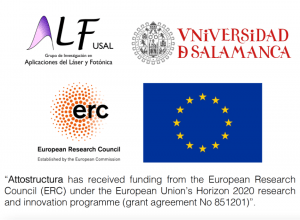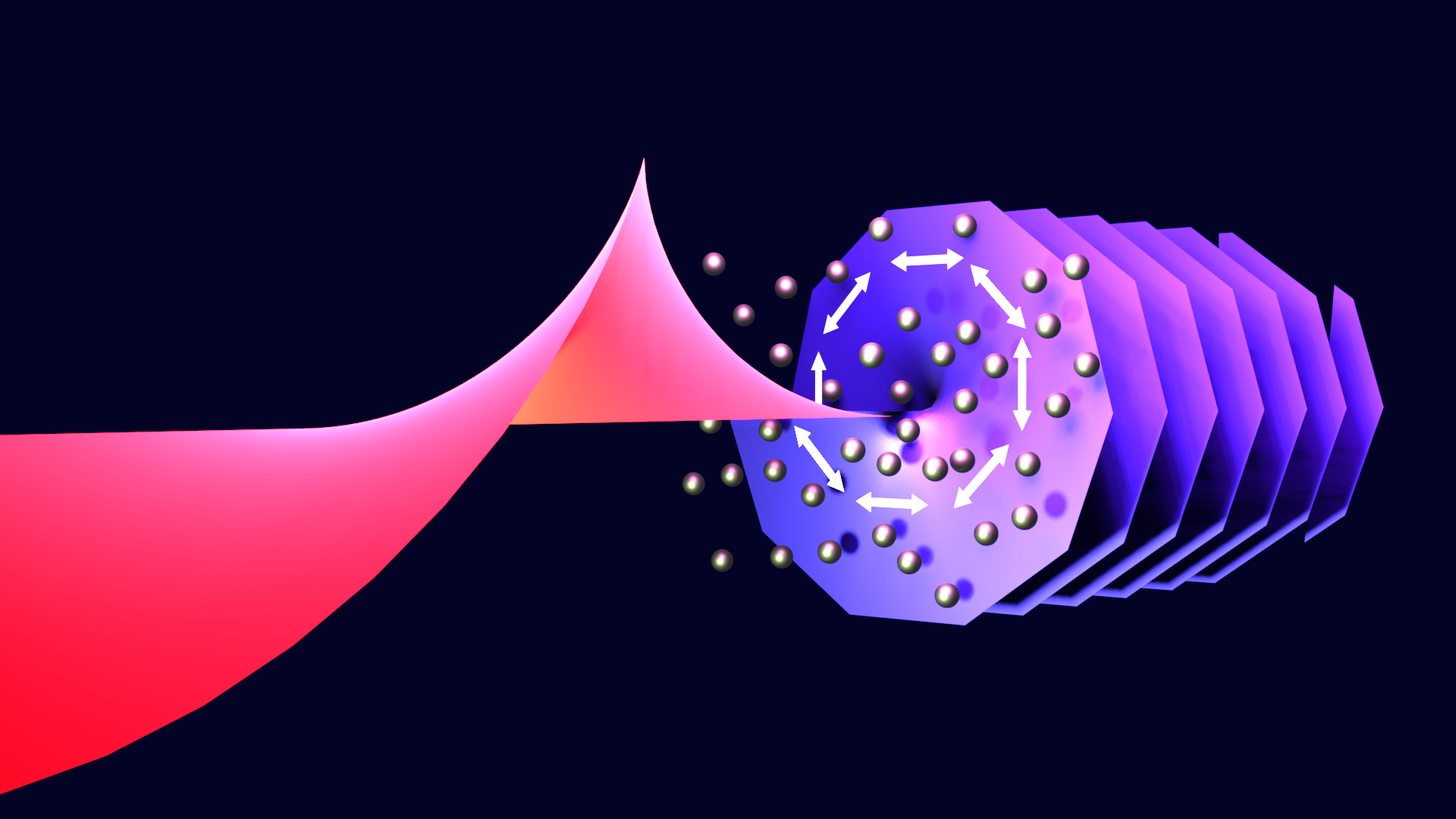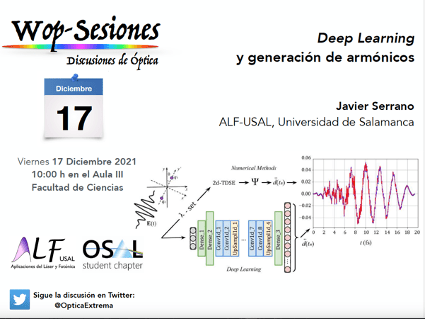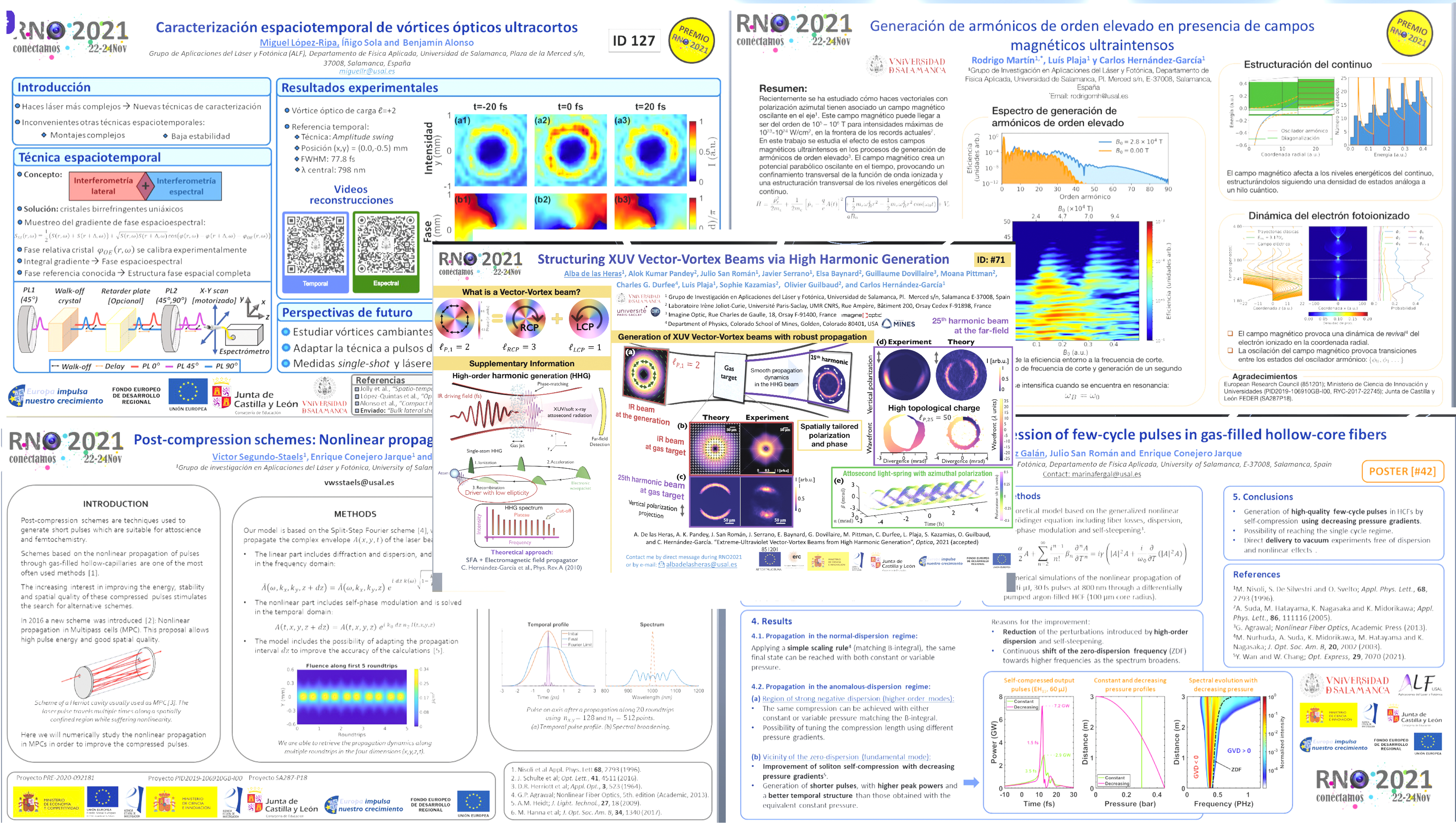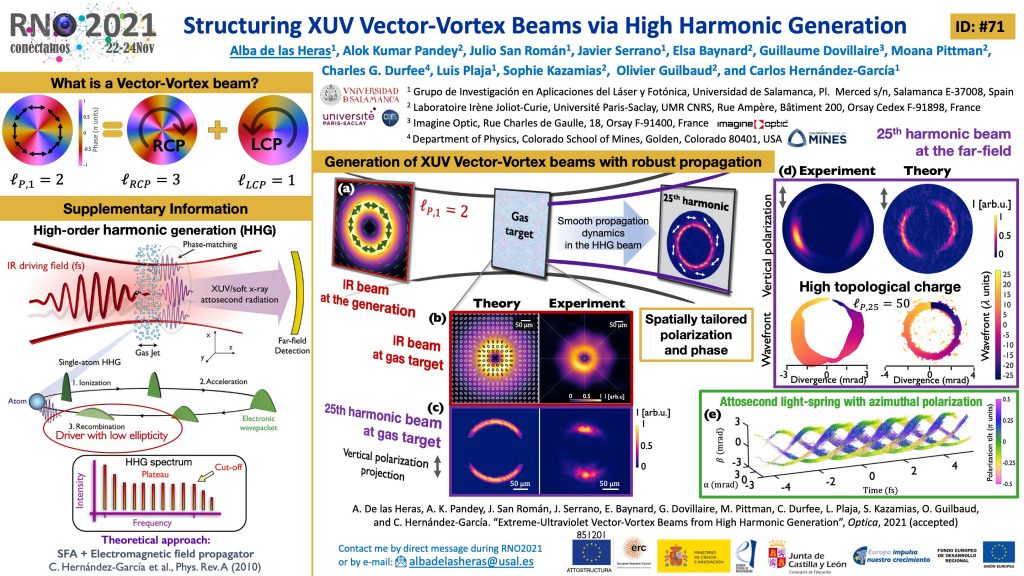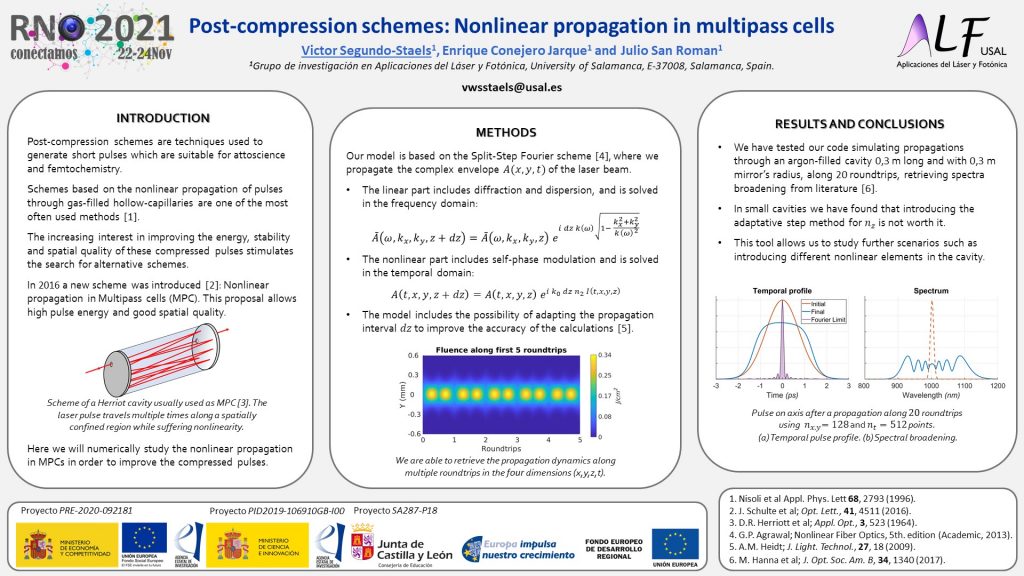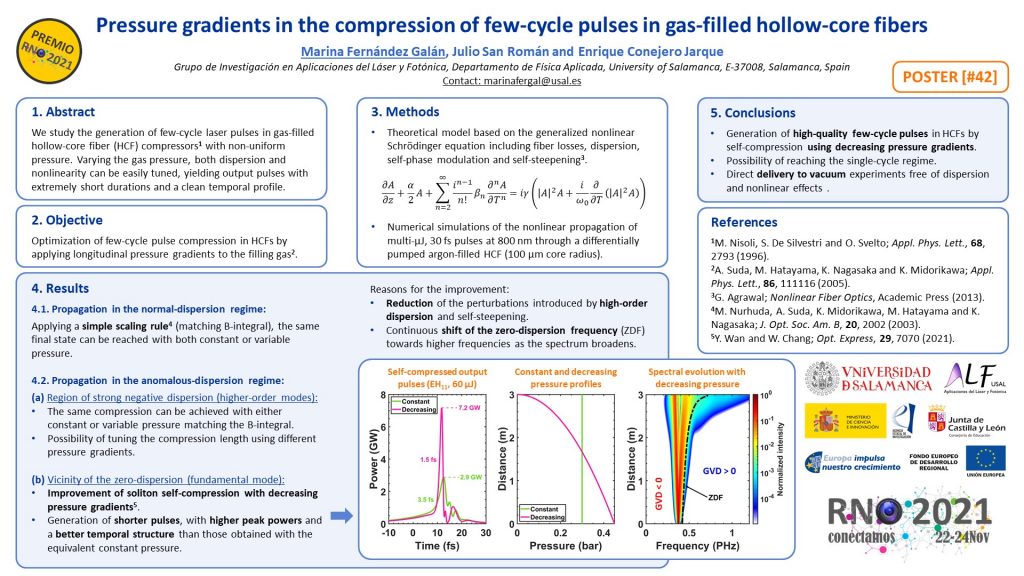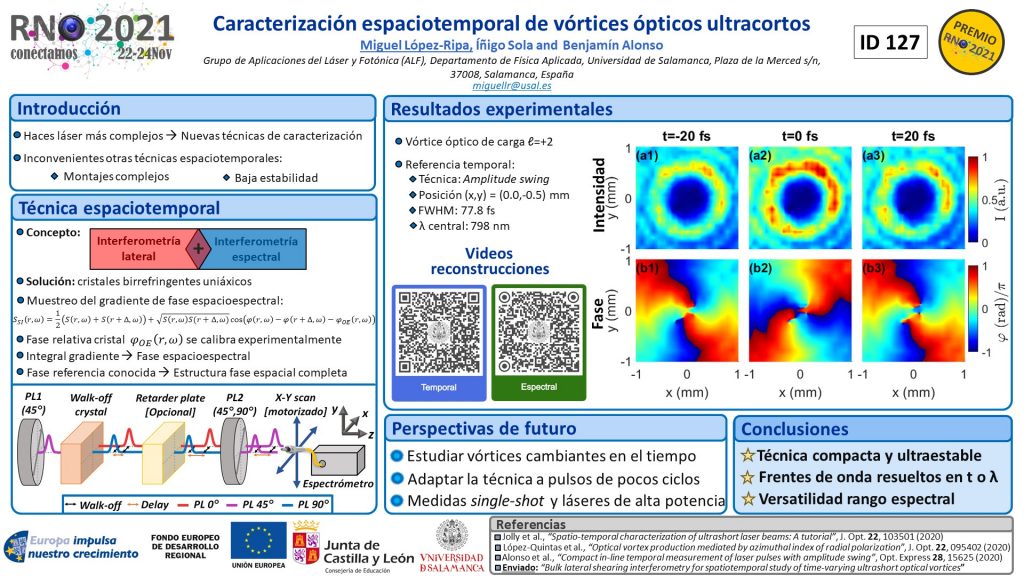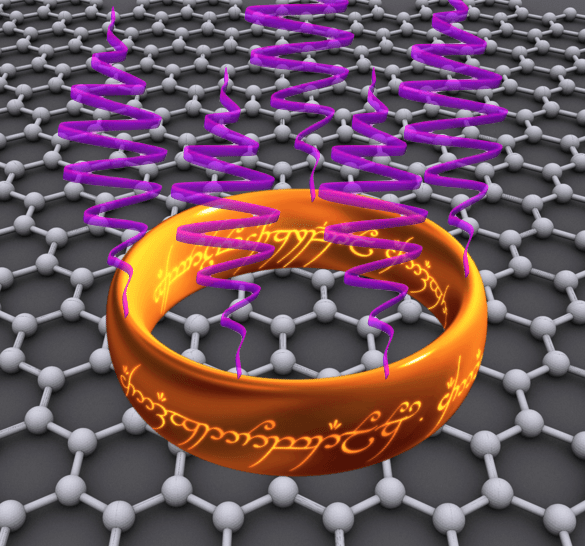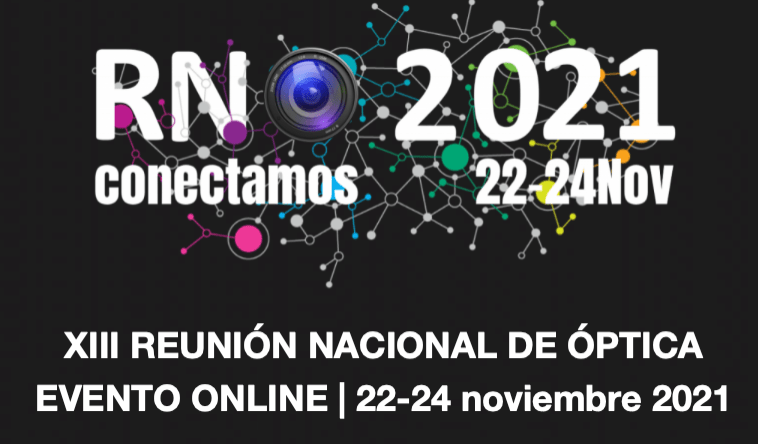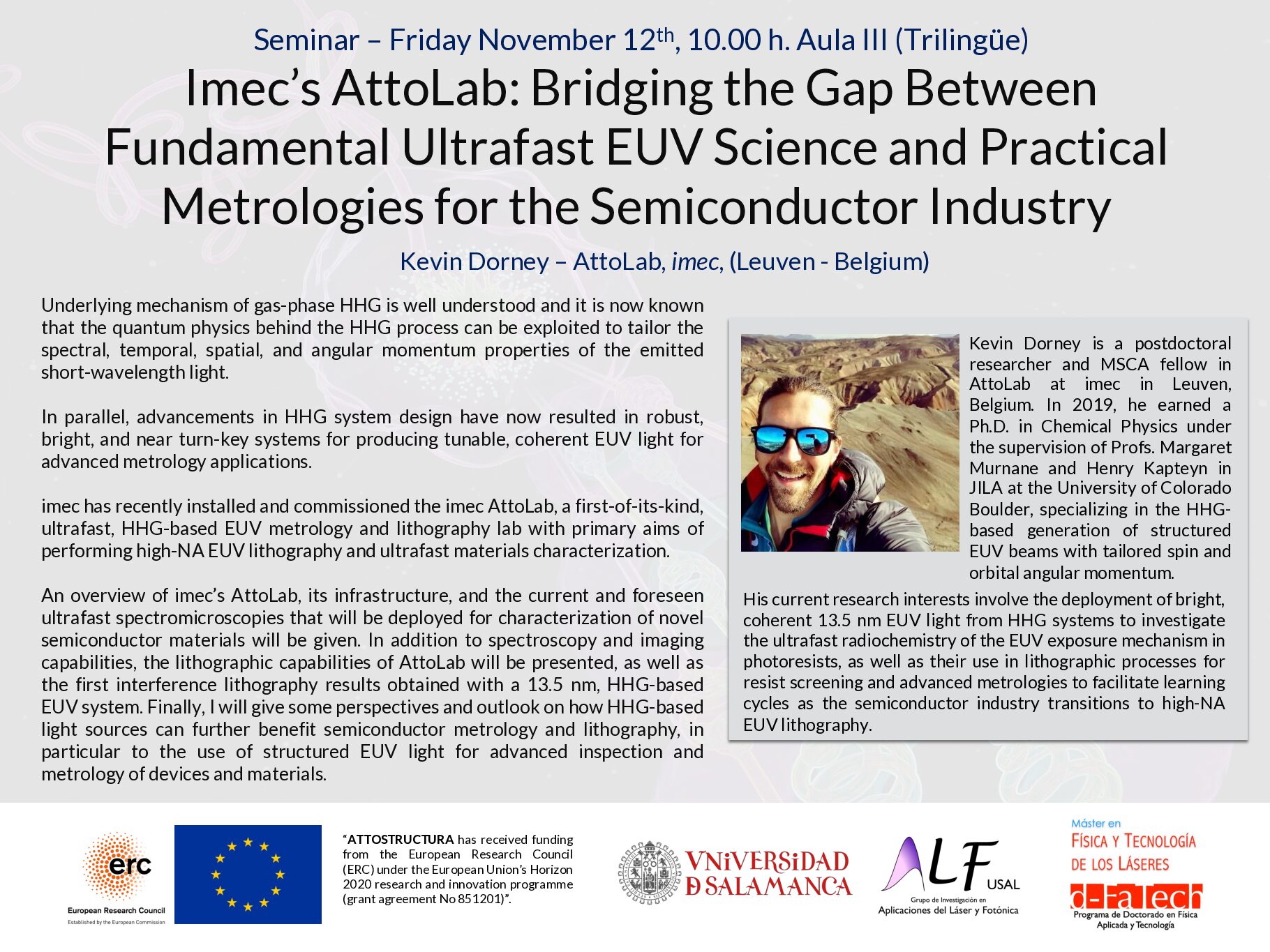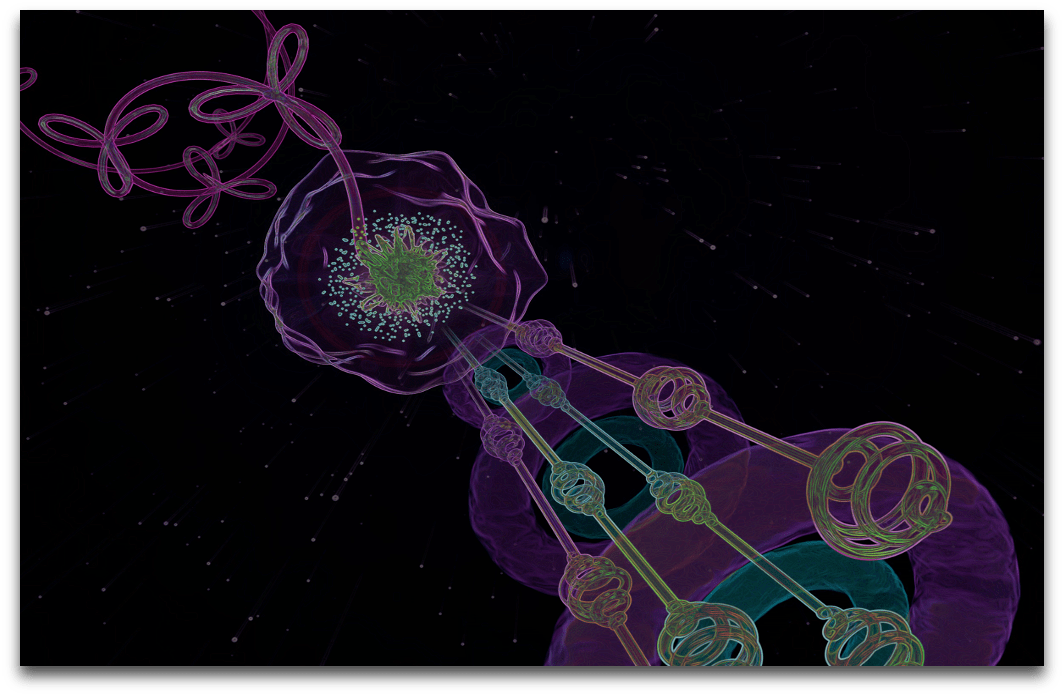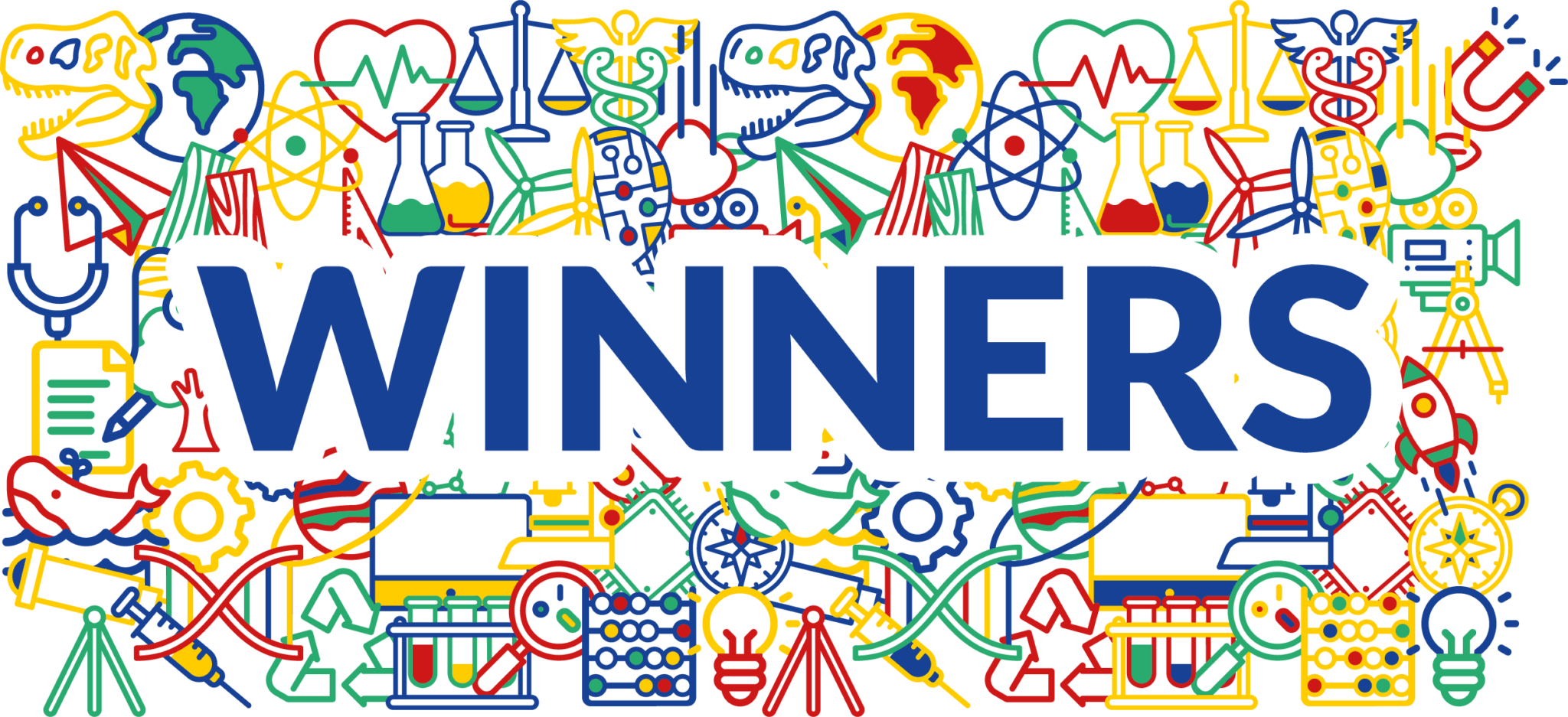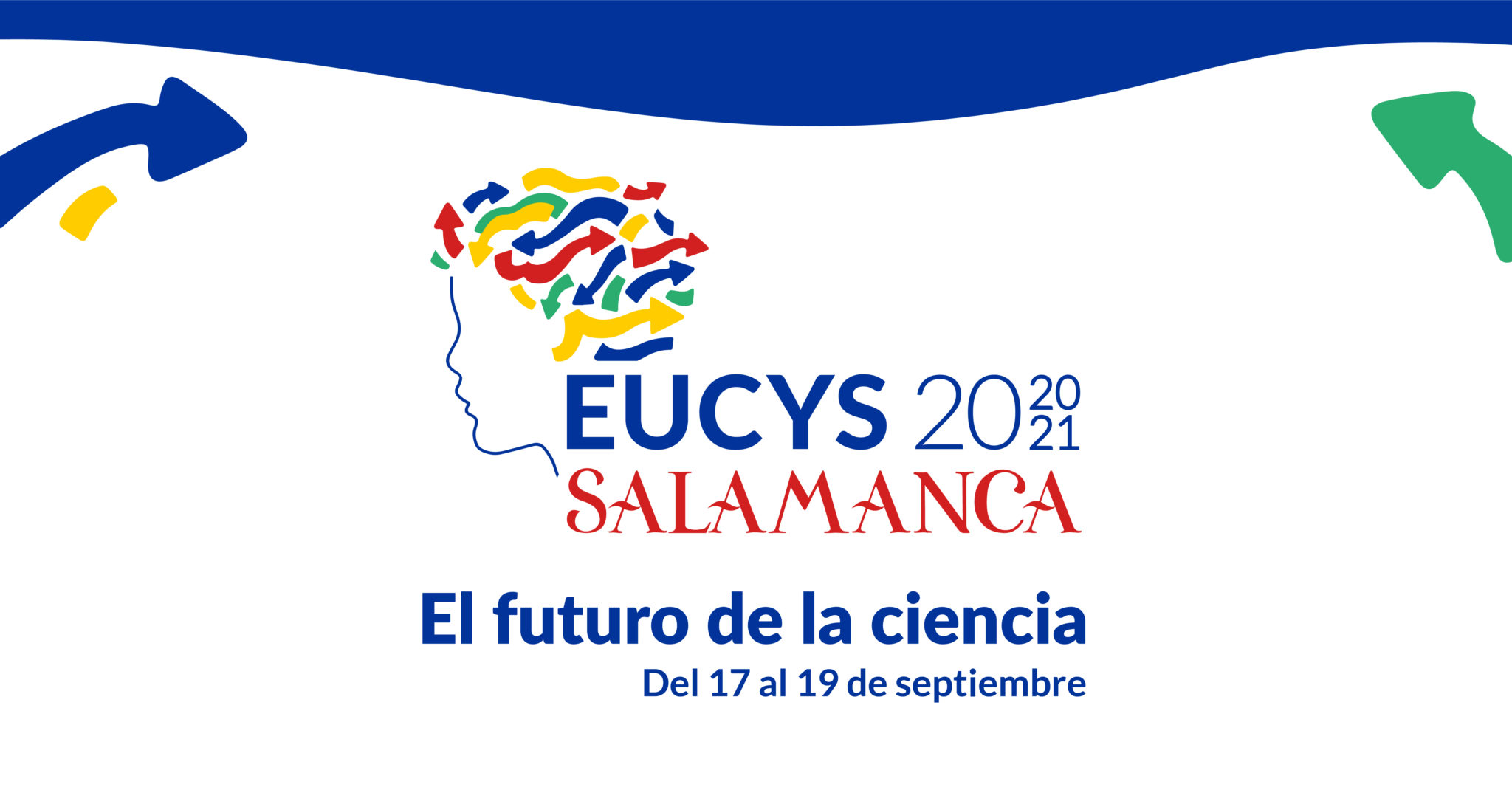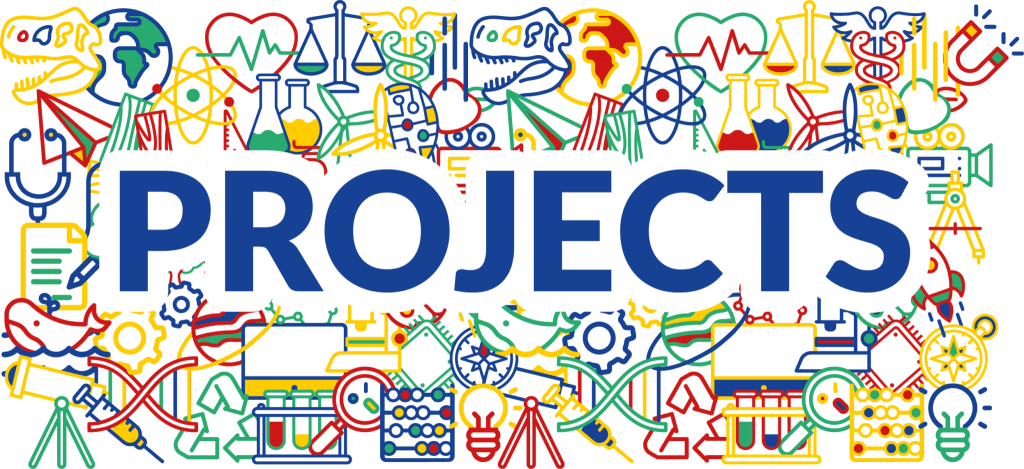The prestigious journal Optica has just published a new article demonstrating the generation of high-frequency light with multiple vibration directions and a spiral phase structure. The research is the result of an international theoretical-experimental collaboration between the Laser and Photonics Applications Group of the University of Salamanca, the University of Paris-Saclay and the Colorado School of Mines. This work was developed within the European project ERC ATTOSTRUCTURA.
One of the great advantages of laser light is that we can shape its spatial properties, with the aim of exploring new scenarios in light-matter interaction and optimizing some applications such as imaging techniques or optical communications.
In this work we organize the distribution of the phase (the instantaneous oscillation position) in the form of a helix, which is the characteristic of optical vortices or “tornadoes of light”. In addition, we configure different polarizations (oscillation directions) in a single laser beam. Forms of light that combine both properties are called vector-vortex beams.
In the high-frequency regime, it is more challenging to structure laser light, since most conventional devices are not efficient for ultraviolet radiation, X-rays or gamma rays. However, we can circumvent this problem thanks to the generation of high-order harmonics. This nonlinear optics process, in which a high-intensity visible or infrared laser interacts with the atoms of a gas, allows us to up-convert the properties into the extreme ultraviolet or X-rays.
Our work demonstrates that we can generate vector-vortex beams in the extreme ultraviolet thanks to the physical conservation laws in high-order harmonic generation. Our theoretical proposal of a new conserved quantity, the Pancharatnam topological charge, in high harmonic generation has been confirmed experimentally in the laboratory of Paris-Saclay.
More information at:
Download the full paper at Gredos @Universidad de Salamanca: http://hdl.handle.net/10366/146004
